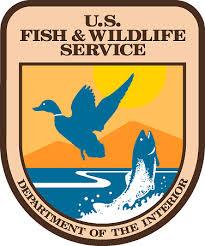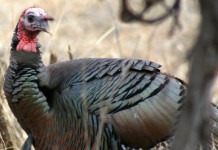The President’s fiscal year 2014 discretionary budget request provides $1.6 billion for the U.S. Fish and Wildlife Service, an increase of $76.4 million over the 2012 enacted level, to fund the agency’s high priority needs. The budget also includes approximately $1.2 billion available under permanent appropriations, most of which will be provided directly to states to support fish and wildlife conservation and outdoor recreation.
The Service’s 2014 budget request contains costs in a number of areas by identifying administrative efficiencies, program reductions, and other savings, while proposing select increases.
America’s Great Outdoors
The budget request includes funding for projects in support of President Obama’s America’s Great Outdoors initiative, such as the Everglades Headwaters National Wildlife Refuge in Florida, that will conserve and protect wildlife and working lands on a landscape level while creating jobs through travel, tourism, and outdoor recreation activities. Working through public-private partnerships and locally-supported conservation strategies, the initiative seeks to protect and restore the nation’s most important ecosystems and natural areas and to reconnect Americans, especially young adults, to America’s natural heritage.
The Administration’s 2014 budget requests $600 million in current and permanent funding across the government for the Land and Water Conservation Fund, and includes a total of $106.3 million within the Service — a net increase of $51.7 million from the FY 2012 enacted level — for land acquisitions that the Service has identified as having the greatest conservation benefit.
In addition, the budget seeks increases for several grant programs administered by the Service that support AGO goals and leverage Federal funds with significant partner contributions. These grant programs include the Cooperative Endangered Species Fund (a $36.3 million increase over FY 2012 enacted level of $47.7 million) and the North American Wetlands Conservation Fund (a $3.9 million increase over the FY 2012 enacted level of $35.5 million). The Service’s budget also provides funding for natural resource jobs for America’s youth, including Youth Conservation Corps positions on wildlife refuges and elsewhere.
New Energy Frontier
In support of the President’s Blueprint for a Secure Energy Future, which calls for safe and responsible development of our nation’s domestic energy resources, the Service’s budget includes an additional $7.4 million to support energy development including funding for enhanced studies of renewable energy projects, technical assistance in project design, and Endangered Species Act consultation. The Service will also pursue scientific information that identifies the impacts of energy transmission infrastructure on important habitat and species, such as the desert tortoise.
Other specific areas of the budget proposal include:
Cooperative Landscape Conservation
The Landscape Conservation Cooperatives program would be funded at $17.6 million, a program increase of $2.1 million. The program will continue to act as a forum for collaborative development and dissemination of applied science products and tools for resource management decisions across landscapes. The initiative enables managers to target limited resources toward the greatest conservation benefit for fish and wildlife. Within the Service, LCCs help support and augment many ongoing programs, including Endangered Species Recovery Plans, Refuge Comprehensive Conservation Plans, fish passage programs, and habitat restoration.
National Wildlife Refuge System
Funding for the operation and maintenance of the national wildlife refuge system is requested at $499.2 million. The request includes an increase of $12.7 million for National Wildlife Refuges operations, enabling Refuges to complete additional habitat improvement projects. The budget request includes $3.2 million for the Cooperative Recovery initiative to address current threats to endangered species on and around wildlife refuges and $3.8 million for the Challenge Cost Share program, which funds a variety of small-scale projects with partners. The request for Refuge Inventory and Monitoring is $3 million above the FY 2012 enacted level and will be used to continue building the landscape scale, long-term inventory and monitoring network that the Service began in FY 2010. An additional $2.7 million will be used for Refuge law enforcement to respond to drug production and smuggling, wildlife poaching, illegal border activity, assaults, and a variety of natural resource violations. It will also be used to assess the Refuge law enforcement radio communications infrastructure.
In FY 2014, the Service will extend a landscape level conservation approach to river systems throughout the Country under the Administration’s National Blueways System. The National Blueways System, established by Secretary Salazar in May, 2012, provides a new emphasis on the unique value and significance of a comprehensive “headwaters to mouth” approach to river management and creates a mechanism to encourage stakeholders to integrate their land and water stewardship efforts. The budget request includes a program increase of $3.3 million for the Service to lead Department-wide implementation of this collaborative program. Funds will be available to land management bureaus in the Department as grants and cooperative agreements. Projects will be selected via a joint decision-making process of the National Blueways Committee, consisting of members from the Department’s land management bureaus.
Law Enforcement
The budget provides $68.3 million for the law enforcement program to investigate wildlife crimes and enforce the laws that govern the Nation’s wildlife trade, an increase of $6.1 million over the FY 2012 enacted level. The request includes a program increase of $1 million to strengthen enforcement of conservation laws such as the Bald and Golden Eagle Protection Act in areas featuring energy development and a general program increase of $4.2 million for enforcement of the Lacey Act, to address technical challenges in wildlife science forensics, and support partnerships with foreign governments to reduce demand for illegal wildlife products.
Endangered Species
The FY 2014 budget includes $185.4 million to administer the Endangered Species Act, an increase of $9.5 million when compared with the FY 2012 enacted level. This increase includes $1.5 million for renewable energy consultation, $1 million for science for pesticide consultations, and $1.9 million for cooperative endangered species recovery on National Wildlife Refuges and in surrounding ecosystems.
Fish and Aquatic Conservation
The budget request includes $140.9 million for the Fish and Aquatic Conservation program, an increase of $5.6 million over the 2012 enacted level. Facilitating the Service’s role and responsibility in promoting ecosystem health, and fisheries and aquatic resource conservation, the budget includes increases of $5.9 million for Asian carp activities, $1.5 million for fish passage improvements, $1.6 million for fisheries management and restoration actions to facilitate currently authorized activities under the Klamath Basin Restoration Agreement, as well as $1.5 million for the Service’s cross-programmatic cooperative recovery initiative.
Ecosystem Restoration
The 2014 budget continues the Service’s commitment to ecosystem restoration on a landscape level by requesting $87.2 million for several priority ecosystems. This funding supports restoration work in the Everglades ($16 million); California Bay-Delta ($4.9 million); Gulf Coast ($10.2 million); Chesapeake Bay ($10.3 million); and Great Lakes ($45.8 million).
Migratory Birds
The request for funding of the Service’s responsibilities for the conservation of migratory birds is $50.1 million, $1.4 million below the FY 2012 enacted level. The North American Wetlands Conservation Fund is funded at $39.4 million, $3.9 million over FY 2012.
International Affairs
The budget request provides the International Affairs program with $13.5 million, an increase of $535,000 above the 2012 enacted level. The budget request for the Multinational Species Conservation Fund is $9.8 million, an increase of $321,000 over the FY 2012 enacted level. Increases are directed at targeting market and consumer demand countries for illegal wildlife products, which is driving a rapid increase in poaching of flagship species as tigers, elephants and rhinos.






















